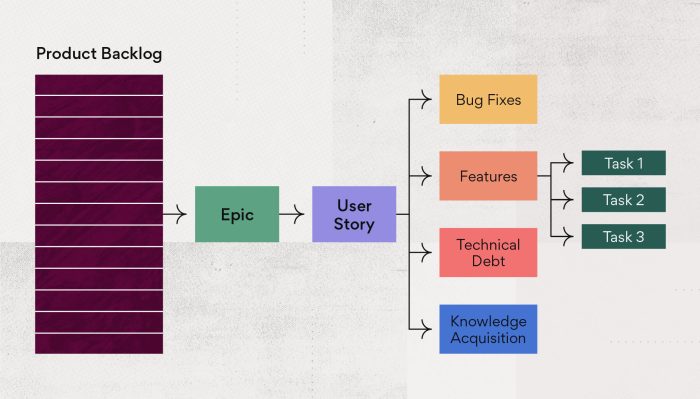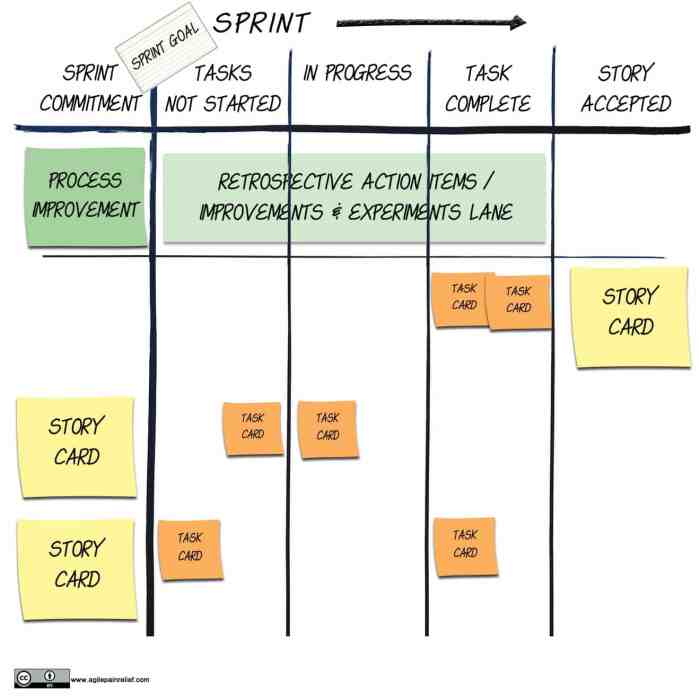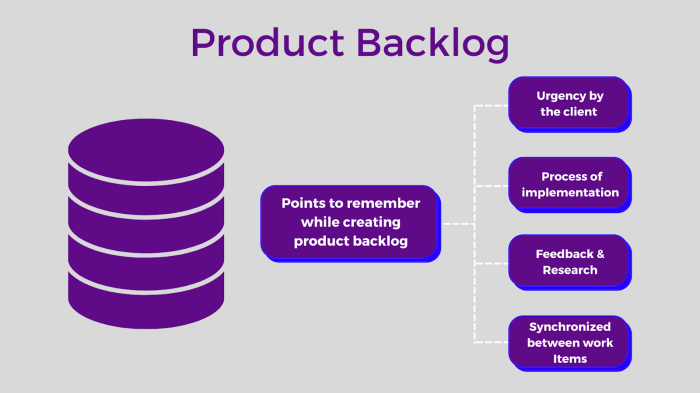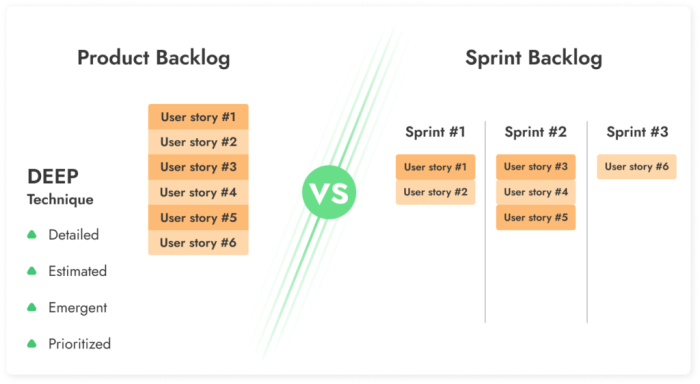How should product backlog items be chosen when multiple exist? This is a critical question for any product manager or scrum master. With so many potential items to choose from, it can be difficult to know which ones to prioritize.
In this article, we will discuss the different criteria that can be used to prioritize product backlog items, as well as the importance of involving stakeholders in the process.
We will also discuss the role of risk assessment, value analysis, and dependency management in backlog item selection. Finally, we will provide some tips on how to plan capacity and iterations to ensure that the highest-priority items are completed on time.
Prioritization Criteria: How Should Product Backlog Items Be Chosen When Multiple

When multiple product backlog items exist, it is important to prioritize them in order to maximize the value delivered to the customer. There are a number of different criteria that can be used to prioritize backlog items, including:
- Value: The value of a backlog item is the benefit that it will provide to the customer. Items that provide the most value should be prioritized over those that provide less value.
- Risk: The risk of a backlog item is the likelihood that it will not be completed successfully. Items that have a high risk of failure should be prioritized over those that have a low risk of failure.
- Dependencies: The dependencies of a backlog item are the other items that must be completed before it can be started. Items that have a lot of dependencies should be prioritized over those that have few dependencies.
- Time sensitivity: The time sensitivity of a backlog item is the importance of completing it by a certain date. Items that are time-sensitive should be prioritized over those that are not.
Stakeholder Involvement
Stakeholders are individuals or groups who have an interest in the product. It is important to involve stakeholders in the backlog item selection process in order to get their input and ensure that their needs are met.
There are a number of different ways to gather stakeholder input, including:
- Interviews: Interviews can be used to gather in-depth information from stakeholders about their needs and priorities.
- Surveys: Surveys can be used to gather feedback from a large number of stakeholders.
- Workshops: Workshops can be used to facilitate group discussions about backlog items and their priorities.
Risk Assessment
Risk assessment is the process of identifying and evaluating the risks associated with a backlog item. The goal of risk assessment is to identify and mitigate risks that could prevent the item from being completed successfully.
There are a number of different types of risks that should be considered when assessing the risk of a backlog item, including:
- Technical risks: Technical risks are risks that are related to the technology that is being used to develop the product.
- Market risks: Market risks are risks that are related to the market in which the product will be sold.
- Organizational risks: Organizational risks are risks that are related to the organization that is developing the product.
Value Analysis
Value analysis is a technique that can be used to prioritize backlog items based on their value to the customer. The goal of value analysis is to identify and maximize the value of the product while minimizing the cost.
There are a number of different techniques that can be used to perform value analysis, including:
- Cost-benefit analysis: Cost-benefit analysis is a technique that compares the costs of a backlog item to the benefits that it will provide.
- Return on investment (ROI) analysis: ROI analysis is a technique that measures the financial return that a backlog item will provide.
- Value stream mapping: Value stream mapping is a technique that visually represents the flow of value through a product development process.
Dependency Management
Dependency management is the process of identifying and managing the dependencies between backlog items. The goal of dependency management is to ensure that backlog items are completed in the correct order and that they do not block each other.
There are a number of different types of dependencies that can exist between backlog items, including:
- Hard dependencies: Hard dependencies are dependencies that must be met before a backlog item can be started.
- Soft dependencies: Soft dependencies are dependencies that are not essential, but that may affect the quality or performance of a backlog item.
Capacity Planning, How should product backlog items be chosen when multiple
Capacity planning is the process of determining how much work can be completed by a team in a given period of time. The goal of capacity planning is to ensure that the team has the resources and time to complete all of the backlog items that are assigned to it.
There are a number of different factors that should be considered when planning capacity, including:
- Team size: The size of the team will determine how much work can be completed.
- Team skills: The skills of the team will determine what types of work can be completed.
- Time constraints: The time constraints that are imposed on the team will determine how much work can be completed.
Iteration Planning
Iteration planning is the process of breaking down a backlog into smaller, more manageable pieces. The goal of iteration planning is to create a plan for completing the backlog in a series of iterations.
There are a number of different techniques that can be used to plan iterations, including:
- Sprint planning: Sprint planning is a technique that is used to plan iterations in Scrum.
- Kanban planning: Kanban planning is a technique that is used to plan iterations in Kanban.
Expert Answers
What are the different criteria that can be used to prioritize product backlog items?
The different criteria that can be used to prioritize product backlog items include:
- Value
- Risk
- Dependencies
- Cost
- Time
How can I involve stakeholders in the backlog item selection process?
There are a number of ways to involve stakeholders in the backlog item selection process, including:
- Conducting stakeholder interviews
- Holding stakeholder workshops
- Using online surveys
- Reviewing existing documentation
What is the role of risk assessment in backlog item selection?
Risk assessment plays a critical role in backlog item selection. By identifying and assessing the risks associated with each item, you can make more informed decisions about which items to prioritize.


